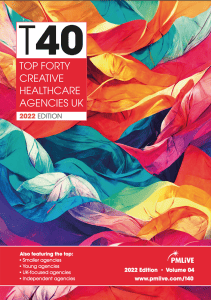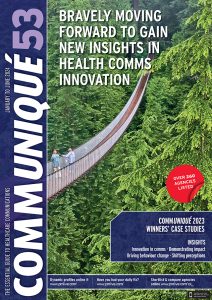
As we continue to have greater access to health-related information, there are increasing examples of patients who have become self-educated to the point that they are instructing their physicians. And beyond that, there are patients who aren’t waiting for the next healthcare innovation; they’re inventing their own. These include a diagnostic test for pancreatic cancer, remote updates from a continuous glucose monitor and sensor technology for stoma care.
Evidence suggests that the pharma industry is responding to increasingly engaged patients and their thirst for information, particularly in the areas of diagnosis, treatment initiation and adherence.
Clinical trials
An area that is surprisingly late to the table however is the cornerstone of medical research: the clinical trial. It seems fairly obvious that patients, and the general public, should be able to access and understand clinical trial results, and there have been increasing demands for these results to be provided in a patient-friendly format. The European Patients’ Forum (EPF) believes this would have a number of benefits:
- Increasing patient and general public awareness and confidence about the clinical trial process
- Helping recruit trial participants
- Providing the trial results to participants in the trial
- Helping patients understand the latest scientific research in the field
- Supporting doctors in communicating trial findings to patients
- Meeting the needs of rare disease communities who are often particularly interested in medicines that are undergoing trials.
In a ground-breaking change to the status quo of complex medical language being a barrier to understanding valuable information for many stakeholders, the European Commission has now recognised this information gap and clinical trial lay summaries will soon become a legal requirement.
Trial summaries
The new Clinical Trial Regulation (EU No 536/2014)5 comes into effect ‘no earlier than May 2016’. It requires trial sponsors to provide two summaries one year after the end of the trial in the EU: a trial summary and a lay person summary. The European Medicine’s Agency (EMA) will manage an EU database, hosting these summaries.
Kaisa Immonen-Charalambous, the EPF’s Director of Policy, says, “The regulation will support patient organisations in educating their members about the research and development of medicines and the regulatory process. But more could be done. For example, securing free access for patient groups to journals and introducing lay summaries of publications.” Kaisa also hopes that gathering patient input into lay summaries could inspire more pharma companies to work with patients at an earlier stage in the clinical development of a product, beginning with the design of clinical trials. We share these hopes. The new regulation is a start and we might just see a ripple effect.
When it comes to actually writing a lay summary, Annex V of the regulation lists the content requirements (see Box 1).
Unfortunately and perhaps surprisingly for a piece of patient-focused legislation, the European Patients’ Forum reported that this list was developed without any consultation with patient groups. The EPF published a position statement on the matter, arguing that EU guidance was required to ensure summary results are ‘unbiased, comprehensive, relevant and understandable to patients’.
Patients and the general public should be able to access and understand clinical trial results
Annex V
Annex V also raised a lot of questions about how to actually write a lay summary. When first reading the list, it all sounds sensible. But when you start to write one, there’s a lot more you need to consider such as: Will there be a defined template broken down by the Annex V sections (which would aid consistency and therefore comprehension)? Will the format be text only or allow for creativity and visuals? What is the reading age that the summary should be aimed at? Which language(s) should it be provided in? Will there be a master glossary?
The European Forum for Good Clinical Practice (EFGCP) held a workshop in May 2015 with representatives from clinical researchers, patient groups (including the EPF) and pharma to debate ‘a meaningful future for lay summaries’. Following the workshop, a working group has been developing a European Commission guidance document. The draft guidance is expected this month, followed by a public consultation period.
Box 1: Content of the summary of the results of the clinical trial for laypersons
The summary of the results of the clinical trial for laypersons shall contain information on the following elements:
- Clinical trial identification (including title of the trial, protocol number, EU trial number and other identifiers)
- Name and contact details of the sponsor
- General information about the clinical trial (including where and when the trial was conducted, the main objectives of the trial and an explanation of the reasons for conducting it)
- Population of subjects (including information on the number of subjects included in the trial in the Member State concerned, in the Union and in third countries; age group breakdown and gender breakdown; inclusion and exclusion criteria)
- Investigational medicinal products used
- Description of adverse reactions and their frequency
- Overall results of the clinical trial
- Comments on the outcome of the clinical trial
- Indication if follow-up clinical trials are foreseen
- Indication where additional information could be found.
Draft guidance
In addition to the questions above, we’ll be interested to see if the following issues are covered and resolved:
- Simplification and emphasis of key points could bring unconscious bias. Simplification needs to be balanced with accuracy and transparency.
- The EPF has highlighted the importance of a lay summary section on ‘limitations of the study, how potential sources of bias and imprecision were addressed, and caveats’ (as included in the technical summary). This will help patients evaluate the results and manage their expectations.
- Advice about patient input is needed, as well as information about how the quality of lay summaries will be ensured. Ideally there would be patient input or review of every lay summary but this would be unfeasible. There should at least be encouragement to bring patients into the process where possible, particularly as each company produces its first lay summaries. Kaisa Immonen-Charalambous, EPF, points out that there are numerous industry commentators who will no doubt take it upon themselves to carry out a quality review.
- Point 10 of Annex V refers to additional information. It will be important that patients understand that a lay summary is just one set of results, which need to be looked at in the broader context of a product’s risks, perceived value and benefits and where that product fits in the treatment landscape. At the EFGCP workshop, it was highlighted that patients could be advised to discuss the lay summary with their doctor.
- Similarly, each clinical trial needs to be understood in the context of drug development stages. Information could be added to each lay summary or there could be master ‘overview’ documents available on the EU database, alongside a glossary.
- While there is a trend of increasingly engaged patients, there are many that do not fall into this category. Patients who are not engaged, or indeed the general public, are unlikely to seek out clinical trial lay summaries on an EMA database. Guidance on wider distribution of the lay summaries would help realise the benefits of open access, patient-friendly clinical trial results.
We await the guidance and we’re curious about how industry will respond to the new legal regulation. Our hope is that it will be seen as a positive step towards genuine transparency between the industry, patients and society, rather than as a box ticking exercise.
We’ve already been inspired by some of our clients who are being proactive, and are starting to produce lay summaries now. These companies have the advantage of getting their internal processes in place ahead of schedule and receiving early feedback from the EMA. Most importantly, they demonstrate that they believe in, and want to deliver, transparency and patient-centricity.
If you would like to be notified when the lay summary guidelines are published and receive an advance copy of our analysis and feedback to the EC, please contact jane.neale@ashfieldhealthcare.com




